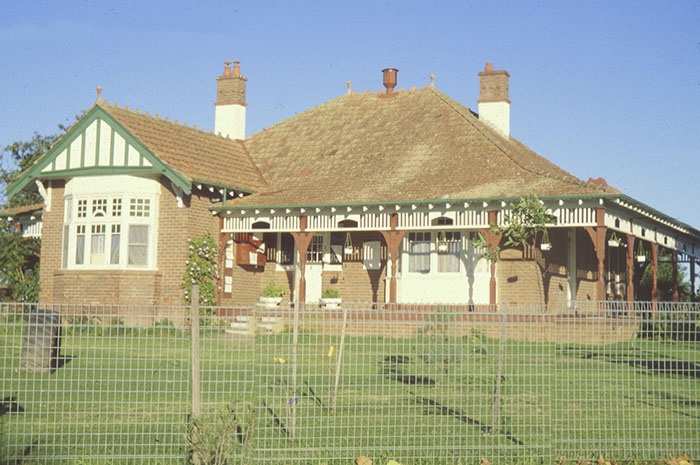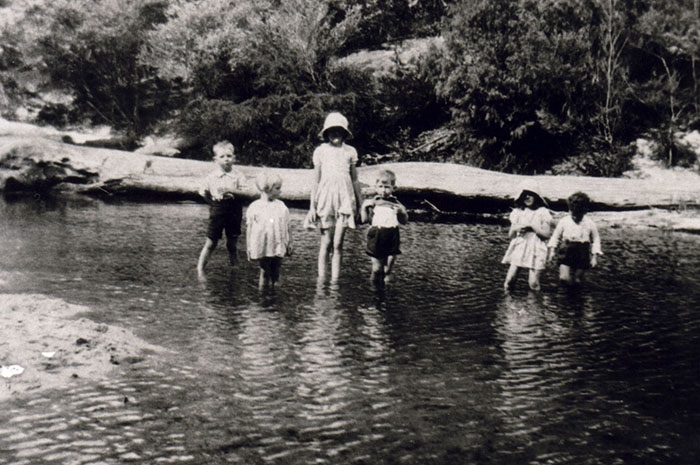History of Airds
The following text is from "Campbelltown's Streets and Suburbs - How and why they got their names" written by Jeff McGill, Verlie Fowler and Keith Richardson, 1995, published by Campbelltown and Airds Historical Society. Reproduced with kind permission of the authors.
"I intend forming this tract of country into a new and separate district for the accommodation of small settlers, and to name it Airds in honour of my dear good Elizabeth's family estate."
So wrote Governor Lachlan Macquarie in November 1810, as he undertook his first visit to the local area. Obviously impressed by the "fine rich land and open forest" he found, the Governor named the region after the Scottish estate of the Campbell family.
For years to come, the name "Airds" regularly appeared in land grant lists, and referred to almost the entire area between Glenfield and Gilead.
Yet as Campbelltown and other settlements along the valley floor came to be known by their individual names after the 1820's, the Airds appellation fell into disuse, and by the late 19th Century had all vanished. It wasn't until the Housing Commission tables its plans for a large new estate in the early 1970's, the Airds was again earmarked as a place name.
The site of the modern suburb was dominated by bushland and small farms for most of its early life. By the 1960's it was known as either "South Campbelltown" or - closer to the river - as a part of Kentlyn. Old Council maps show many of Airds's main streets existed prior to the development of the Housing Commission estate in the 1970's, but followed vastly different paths.
Riverside Drive was originally "Riverside Road", and got its name from the nearby farm of William Longhurst. Prior to1973, this roadway joined the end of Junction Road, but it was later redeveloped into a kidney shape and now loops through the suburb.
Greengate Drive's earliest origins are obscure, but may derive from something as simple as an old gate painted green which may have straddled the once rural roadway.
Deans Road once joined Georges River Road, but is now a crescent-shaped thoroughfare leading to John Warby Public School. Yet as early as March 1954, the CI News complained the road was misspelt, as it was named in memory of the war service of a well-known Campbelltown family, and should therefore be "Deanes Road." The spelling remains wrong to this day, but Council has made amends be dedicating a reserve between Airds and Bradbury as Deanes Park.
Briar Road may have been named due to a nearby clump of prickly scrub or heather, but it was definitely not named after nearby Briar Cottage(PDF, 243KB) - in fact it seems the opposite is true.
Alex Goodsell, long-time president of the Campbelltown and Airds Historical Society, lived in the cottage as a youngster and recalls it was known as Dorchester Park until the 1950's, when it was renamed Delana - and then Briar Cottage, apparently after the road, in the 1970's. By August 1977, the old home was a kindergarten. A reserve near it is called Dorchester Park.

Briar Cottage in 1981. Photo: Verlie Fowler
Many old-time residents who travelled along the Woolwash Road to swim in the Georges River, now have a hard job locating it. This is because the Housing Commission turned it into several tiny cul-de-sacs branching off Greengate Drive.
It has often been claimed The Woolwash got its name because it was where the local wool clip was scoured to lighten it on its overland journey to the Sydney market. This is widely accepted, but has aroused some suspicion. A former local ranger, Keith Longhurst, says evidence to substantiate the story is hard to come by. "The earliest reports of the existence of the road to the Woolwash came from the early 1880's when the combined effect of a drought and a wheat crop failure resulted in the construction of a road under the employment relief scheme," he has claimed.

The Denison family children enjoy the Woolwash in the 1930's. Photo donated to Campbelltown Library by A Denison.
The Woolwash Reserve is one of Campbelltown's older bushland parks, and was once a source of water, mainly for cattle. By the 1930's, it was a popular swimming and picnic area, but since the 1970's and subsequent suburban growth, has suffered from vandalism, neglect and pollution.
In June 1972 it was announced a new high school would be built in Briar Road "close to heavily wooded bushland" on land formerly used for dairying. By 1974, Airds High School and Briar Road Public School were both in operation, originally drawing their students from Bradbury, John Warby Public School, named after the local pioneer (see Leumeah), was opened in 1978.
It was in January 1975, that tenders for the first homes in the Commission's "Kentlyn" subdivision were called. (The name Airds was not approved until May 1976). At first, it was planned to erect nine-storey tower flats, but after stubborn resistance by Council, this was dropped. Street names were approved in 1975, using a wool industry theme, due to the proximity of the Woolwash.
Any detailed history of Australian sheep breeding should reveal the reasons behind the titles chosen. The more obvious include: Foveaux Place, recalling the early sheep farmer, Joseph Foveaux. Other major breeders were Walter Davidson, Cpt Thomas Rowley, Samuel Marsden, William Faithful, F.S Falkiner and Edward Elliot of "The Ponds" near Parramatta.
It was Captain Waterhouse RN, who in 1796 brought the first Merino sheep to NSW in the ship Reliance. Almost ten years later, John Macarthur imported stud merinos from the royal flock at Kew, via the ship Argo. Sheep breeds include Teeswater, Cheviot, Saxon, Peppin and the Southdown. Major Australian studs include Haddon Rig, Springfield, Wanganella, Bundemar, Boonoke, Morago and Merriman.
Canally Reserve pays tribute to a Riverina sheep stud, while Brindley Park recalls an old property in the Hunter Valley. Riley Park honours Saxon wool breeder, Edward Riley.
Kevin Wheatley Memorial Reserve was opened as a major sporting complex and home of the RSL Youth Club in 1978. It was named after the gallant Campbelltown soldier who won a Victoria Cross (posthumously) after being killed in Vietnam in 1965.
Mary Reiby School, opened in 1973 as an institution for delinquent girls, was called after the famous girl who arrived at Sydney in chains, yet went on to achieve great success and wealth in the early colony.